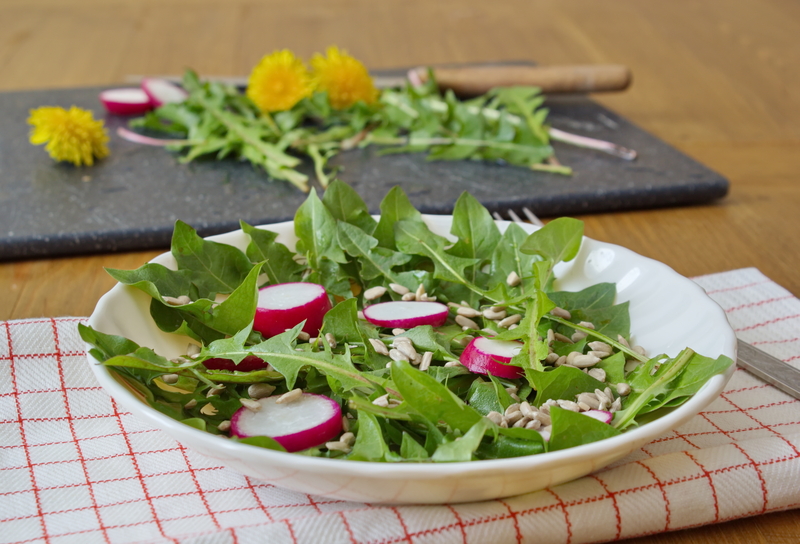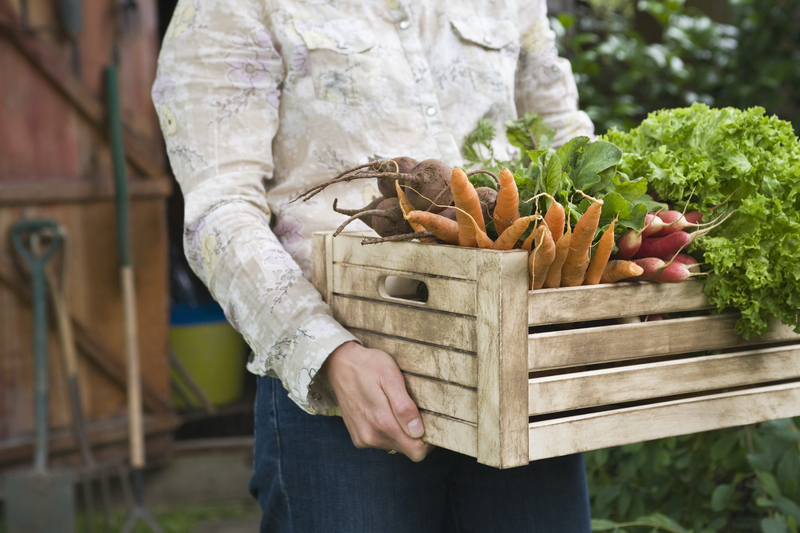Launching a Garden Transformation: Where to Start
Posted on 29/08/2025
Launching a Garden Transformation: Where to Start
Dreaming of an outdoor space that reflects your personal style, encourages relaxation, and boosts curb appeal? Embarking on a garden transformation can be both exciting and overwhelming. But with a well-structured approach, you can turn any neglected patch of land into a thriving paradise. This comprehensive guide will walk you through every important step, ensuring your garden makeover is successful!

Why Consider a Garden Transformation?
Transforming your garden brings a host of benefits--from increasing property value to fostering a healthier lifestyle. A well-planned garden makeover provides:
- Enhanced Visual Appeal: Beautiful gardens elevate the look of any home.
- Functional Outdoor Space: Enjoy areas for relaxation, play, or dining.
- Environmental Benefits: Improved air quality, wildlife habitats, and reduced heat buildup.
- Personal Wellbeing: Gardening is therapeutic, reducing stress and improving mood.
Assessing Your Garden: The Crucial First Step
Before you dive into buying plants or furniture, it's essential to analyze what you already have. An honest assessment establishes a foundation for your garden renovation journey.
Survey the Space
- Size & Shape: Measure your garden and sketch a rough plan. Note features like slopes, shaded areas, or uneven ground.
- Soil Quality: Check if your soil is sandy, clayey, or loamy. Consider pH testing kits for better plant decisions.
- Sunlight Patterns: Track which areas get morning sun, afternoon shade, or remain largely unlit.
- Existing Features: Identify plants, trees, or structures you want to keep, move, or remove.
Set Your Garden Transformation Goals
- Purpose: Define how you intend to use the garden--entertaining, relaxation, children's play, or food production?
- Style: Prefer a cottage garden, modern minimalism, Japanese serenity, or wildlife-friendly design?
- Budget: How much are you willing or able to invest?
- Maintenance Level: Do you want a low-effort setup or a hands-on horticultural haven?
Knowing your vision clarifies decision-making and prioritizes your to-do list for your outdoor space transformation.
Planning the New Landscape
Find Inspiration
Look for ideas in magazines, garden shows, and websites. Gather images of gardens you admire. Use these references to piece together your garden makeover mood board.
Draw a Scaled Layout
- Mark permanent structures (sheds, patios, fences).
- Outline zones for potential lawns, flowerbeds, vegetable patches, or decks.
- Consider focal points--ponds, water features, sculptures, or specimen trees.
Sketching helps visualize the garden renovation and spot potential challenges before physical work begins.
Address Practical Considerations
- Drainage: Identify soggy spots needing extra attention.
- Access: Plan routes for wheelbarrows, mowers, or emergency exits.
- Utilities: Note locations of water taps, lighting, or irrigation systems.
Clearing and Preparing the Site
Remove or Relocate Old Plants
Keep only what aligns with your new vision. Rehome or compost unwanted plants and clear invasive weeds thoroughly to prevent regrowth.
Soil Enrichment
- Add compost, manure, or soil conditioners to boost nutrition.
- Till or dig deeply to aerate and mix in amendments.
- Consider raised beds if soil is poor or heavily compacted.
Levelling and Hard Landscaping
Tackle any grading needed for lawns or patios. Lay foundations or pathways early--this allows for seamless integration and prevents damage to new plantings.
Designing Your Garden Transformation
Choose the Right Plants
- Climate Suitability: Select varieties adapted to your region's conditions.
- Layering: Arrange from low groundcovers to mid-level shrubs and tall trees for depth and interest.
- Seasonal Interest: Mix evergreens, spring bulbs, summer perennials, and autumn tones for year-round beauty.
- Color Coordination: Plan harmonious palettes or bold contrasts for desired effects.
Incorporate Hardscaping Elements
- Paths & Edging: Guide movement and define garden zones.
- Patios & Decks: Create usable living spaces for lounging or entertaining.
- Pergolas & Arbors: Add structure and support climbing plants.
- Water Features: Ponds, fountains, or birdbaths introduce sensory interest and attract wildlife.
These features can become dramatic garden transformation focal points, tying the whole design together.
Consider Lighting for Ambiance
Outdoor lighting transforms evening gardens. Use solar stake lights, string lanterns, or spotlights on trees to extend enjoyment and ensure safety after sunset.
Executing the Garden Makeover
Staged Implementation
- Create a timeline and start with structural changes--hardscaping comes first to avoid disturbing delicate plants.
- Follow with soil preparation and irrigation installation.
- Plant trees, shrubs, and perennials next; annuals and finishing touches go in last.
Implementing your garden renovation in stages allows for flexibility and time management, spreading costs and labor.
DIY vs. Professional Help
- DIY Approach: Great for smaller projects or when learning is part of the fun. Local extension offices and online tutorials offer guidance.
- Professional Landscapers: Consider hiring for large-scale changes--like complex patios, major earthwork, or sophisticated planting schemes.
Even with expert help, stay involved--your preferences steer the project's outcome.
Tips for Success
- Test as You Go: Temporary setups (like movable planters) allow for experimenting with layout before committing.
- Keep Flexible: Sometimes constraints inspire creative solutions!
- Celebrate Small Wins: Each completed area motivates you for the next phase.
Maintaining Your Transformed Garden
Essential Care Routines
- Consistent watering, especially for new plants, ensures early establishment.
- Mulching controls weeds, retains moisture, and improves soil health.
- Regular pruning and deadheading promote growth and neatness.
- Check for pests and diseases, addressing issues promptly to keep your garden healthy.
Embrace Sustainability
- Collect rainwater for irrigation to reduce costs and environmental impact.
- Plant native species--they thrive more readily and support local wildlife.
- Compost kitchen and garden waste to enrich soil naturally.
Sustainable practices keep your outdoor transformation beautiful and eco-friendly!
Garden Transformation Costs: Setting Realistic Budget Expectations
Budget Breakdown
Costs vary greatly depending on garden size, chosen materials, and whether you hire help. Typical expenses include:
- Hard landscaping materials (paving, fencing, decking)
- Soil, compost, fertiliser, and mulch
- Plants, seeds, and trees
- Outdoor furniture, lights, and accessories
- Professional labor (if needed)
It's practical to set aside a contingency fund for unexpected issues, such as hidden debris or poor soil quality discovered mid-project.
Expert Tips for a Stress-Free Garden Transformation
- Start Small if Needed: Focus on manageable zones first--like a flower border or vegetable bed--before tackling the whole yard.
- Document Progress: Take photos before, during, and after each stage. It's rewarding to see how far you've come!
- Stay Open to Learning: Gardening is a journey of experimentation. Don't be discouraged by setbacks; each one teaches you something new.
- Get the Family Involved: Splitting tasks makes the process more fun and less overwhelming.

Frequently Asked Questions About Garden Transformations
-
How long does a garden transformation take?
Depending on the scale, most projects take a few weeks to several months. Allow time for plant establishment, especially during spring or autumn for best results. -
Is it expensive to transform a garden?
Garden makeovers range from low-cost DIY refreshes to major investments. Careful planning and prioritizing features keep costs under control. -
What are the easiest plants for beginners?
Start with robust, low-maintenance options like lavender, hostas, daylilies, and ornamental grasses while building confidence. -
How do I make my small garden feel bigger?
Use mirrors, vertical planters, pale colors, and diagonal paths to create the illusion of space in compact gardens.
Conclusion: Your Garden Transformation Starts Here
Launching a garden transformation doesn't have to be overwhelming. Start with a clear evaluation, set realistic goals, and plan with care. By tackling the process step-by-step and embracing creativity, you can turn any yard into a stunning, personal retreat. Whether you're cultivating a tranquil haven for reflection, an energetic space for gatherings, or a sustainable oasis for wildlife, the possibilities are endless.
Remember, great gardens grow over time. Each step you take brings new beauty to your home. Happy transforming!



